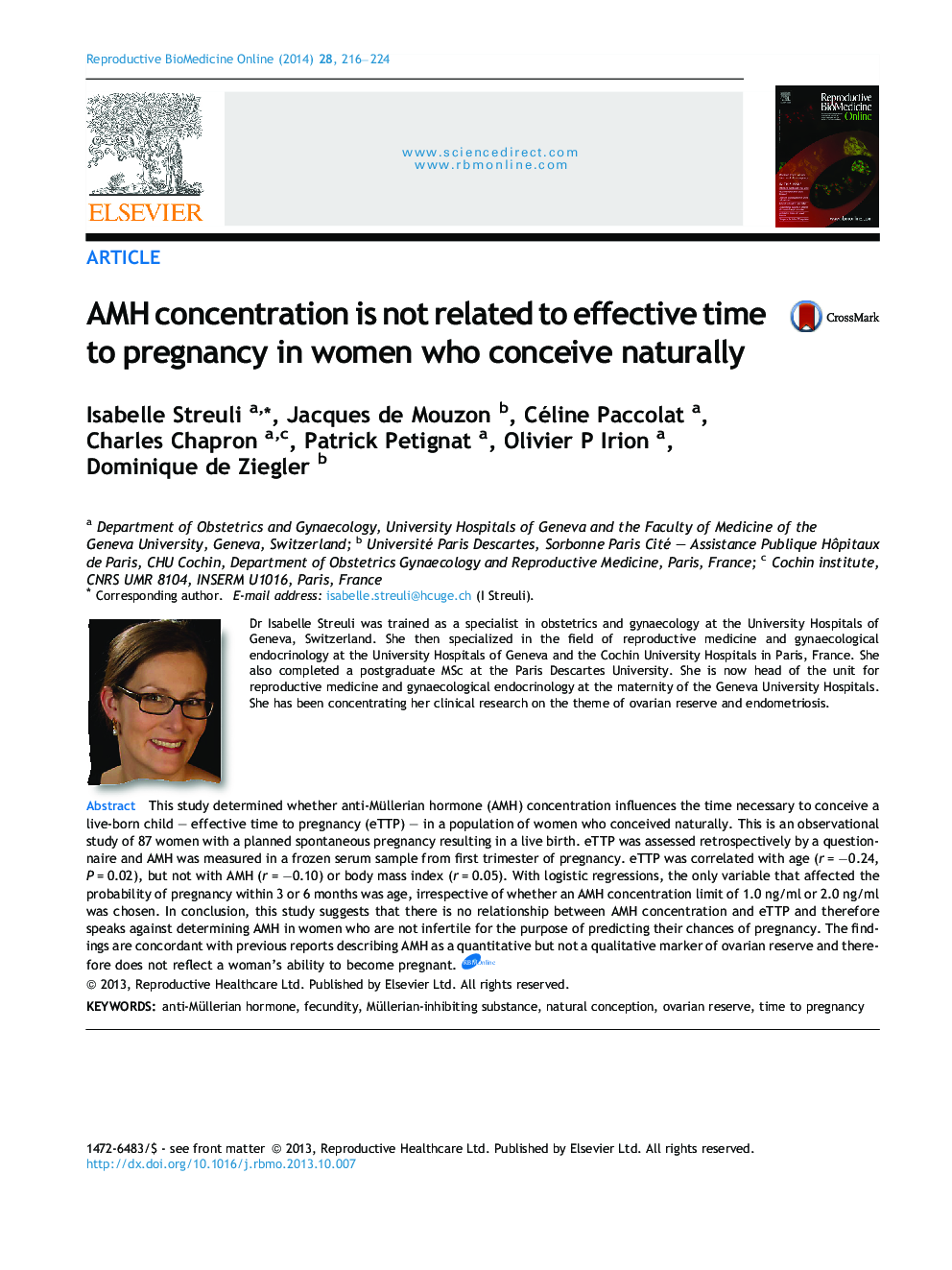| Article ID | Journal | Published Year | Pages | File Type |
|---|---|---|---|---|
| 3970287 | Reproductive BioMedicine Online | 2014 | 9 Pages |
This study determined whether anti-Müllerian hormone (AMH) concentration influences the time necessary to conceive a live-born child – effective time to pregnancy (eTTP) – in a population of women who conceived naturally. This is an observational study of 87 women with a planned spontaneous pregnancy resulting in a live birth. eTTP was assessed retrospectively by a questionnaire and AMH was measured in a frozen serum sample from first trimester of pregnancy. eTTP was correlated with age (r = −0.24, P = 0.02), but not with AMH (r = −0.10) or body mass index (r = 0.05). With logistic regressions, the only variable that affected the probability of pregnancy within 3 or 6 months was age, irrespective of whether an AMH concentration limit of 1.0 ng/ml or 2.0 ng/ml was chosen. In conclusion, this study suggests that there is no relationship between AMH concentration and eTTP and therefore speaks against determining AMH in women who are not infertile for the purpose of predicting their chances of pregnancy. The findings are concordant with previous reports describing AMH as a quantitative but not a qualitative marker of ovarian reserve and therefore does not reflect a woman’s ability to become pregnant.Anti-Müllerian hormone (AMH) is secreted by small growing ovarian follicles and reflects a woman’s ovarian reserve – the number of primordial follicles at a given time. AMH concentrations has been extensively studied in infertile women but there are only scarce data on AMH in non-infertile women. Our objective was to determine whether AMH concentrations influence the time necessary to conceive a live-born child – also called effective time to pregnancy (eTTP) – in a population of women who conceived naturally. We conducted an observational study between 2007 and 2009 in which we assessed eTTP retrospectively in 87 women who had delivered a live-born child and measured AMH in a frozen blood sample collected during the first trimester of pregnancy. The results of our study show, as expected, a decrease of AMH concentrations as age increases but no relationship between AMH and eTTP. In conclusion, our study results suggest AMH concentrations do not influence the time necessary to conceive a live-born child spontaneously and therefore speak against determining AMH in women who are not infertile for the purpose of predicting their chances of pregnancy. Our findings are concordant with previous reports describing AMH as a quantitative but not a qualitative marker of ovarian function that does therefore not reflect a woman’s ability to become pregnant.
